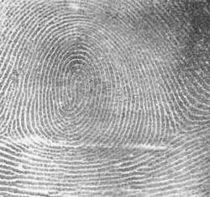 Human identification is central to an effective criminal justice process. It is essential that the identity of any individual is established unambiguously before they are arrested charged or tried. The most common means of achieving this worldwide is by comparison of fingerprints taken from the individual with known fingerprint records. Such records can also be used to eliminate potential suspects and identify offenders from fingerprints left at crime scenes. Fingerprints are also one of the four accepted forms of identification for missing persons and disaster victim identification. In recent years a number of high profile cases from around the world, and more particularly from Scotland, have cast doubt on the validity and reliability of fingerprint evidence.
Human identification is central to an effective criminal justice process. It is essential that the identity of any individual is established unambiguously before they are arrested charged or tried. The most common means of achieving this worldwide is by comparison of fingerprints taken from the individual with known fingerprint records. Such records can also be used to eliminate potential suspects and identify offenders from fingerprints left at crime scenes. Fingerprints are also one of the four accepted forms of identification for missing persons and disaster victim identification. In recent years a number of high profile cases from around the world, and more particularly from Scotland, have cast doubt on the validity and reliability of fingerprint evidence.
The events held for this programme were unique given that there has never before been a gathering of international fingerprint experts, managers and policy makers for this purpose. The first workshop consisted of senior international figures from academia, police and practice and aimed to analyse the issues, establish causes and failings, and make proposals for their resolution and future prevention. The second workshop focussed primarily on the communication of outputs from the first workshop to the practitioner community and engaged with this community to assess the realism of the proposals developed and their support for implementation.
Areas explored include:
- Identifying factors that contributed to the undesirable outcomes in these cases, how they arose and interacted
- Identifying factors of general relevance to fingerprint practices irrespective of jurisdiction
- Identifying practical and theoretical mechanisms to address the issues.
Specific issues explored included:
- Implications of previous poor practice?
- Evaluation of fingerprint identifications fit for purpose?
- Implications of adopting probabilistic interpretation in legal, professional and training terms?